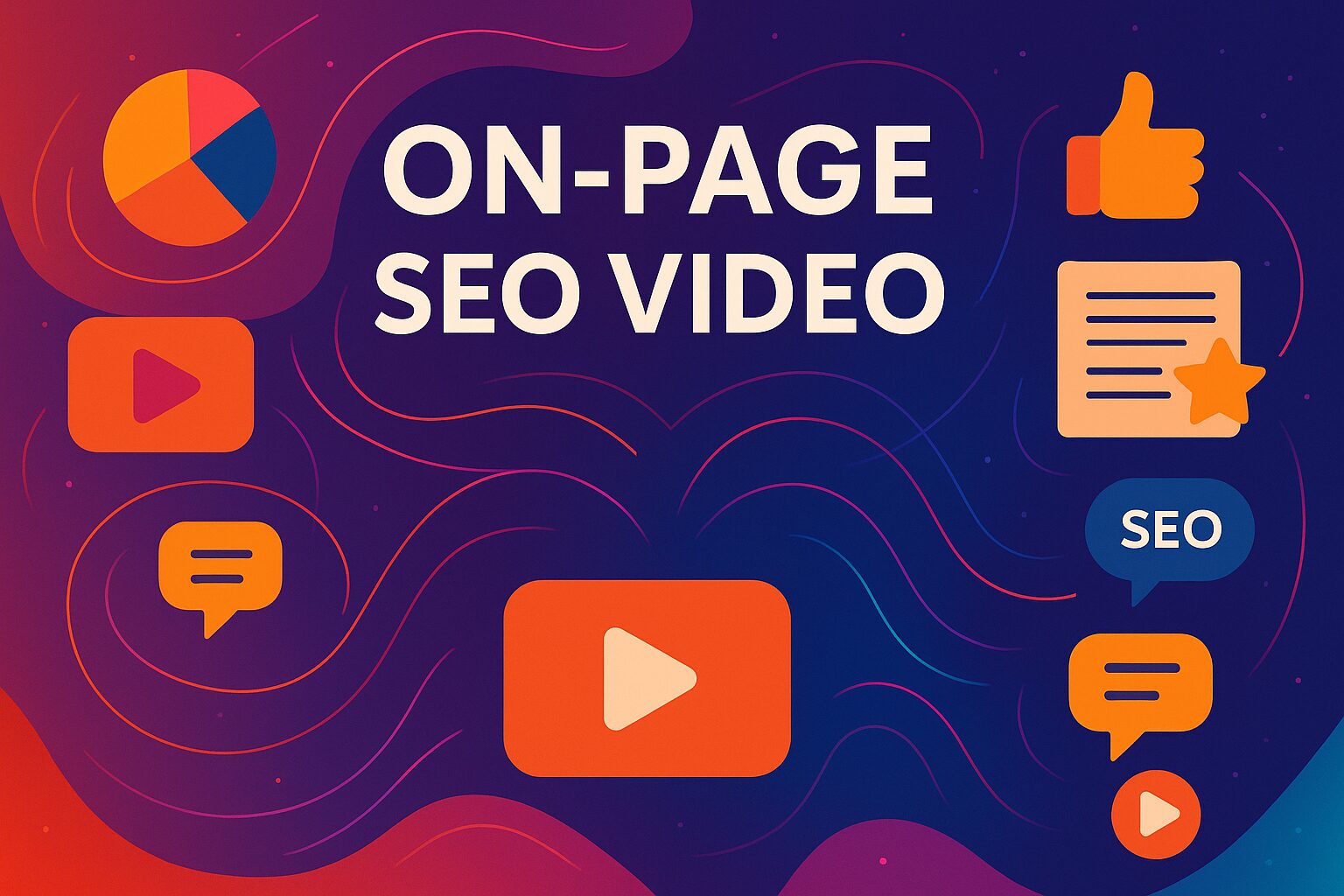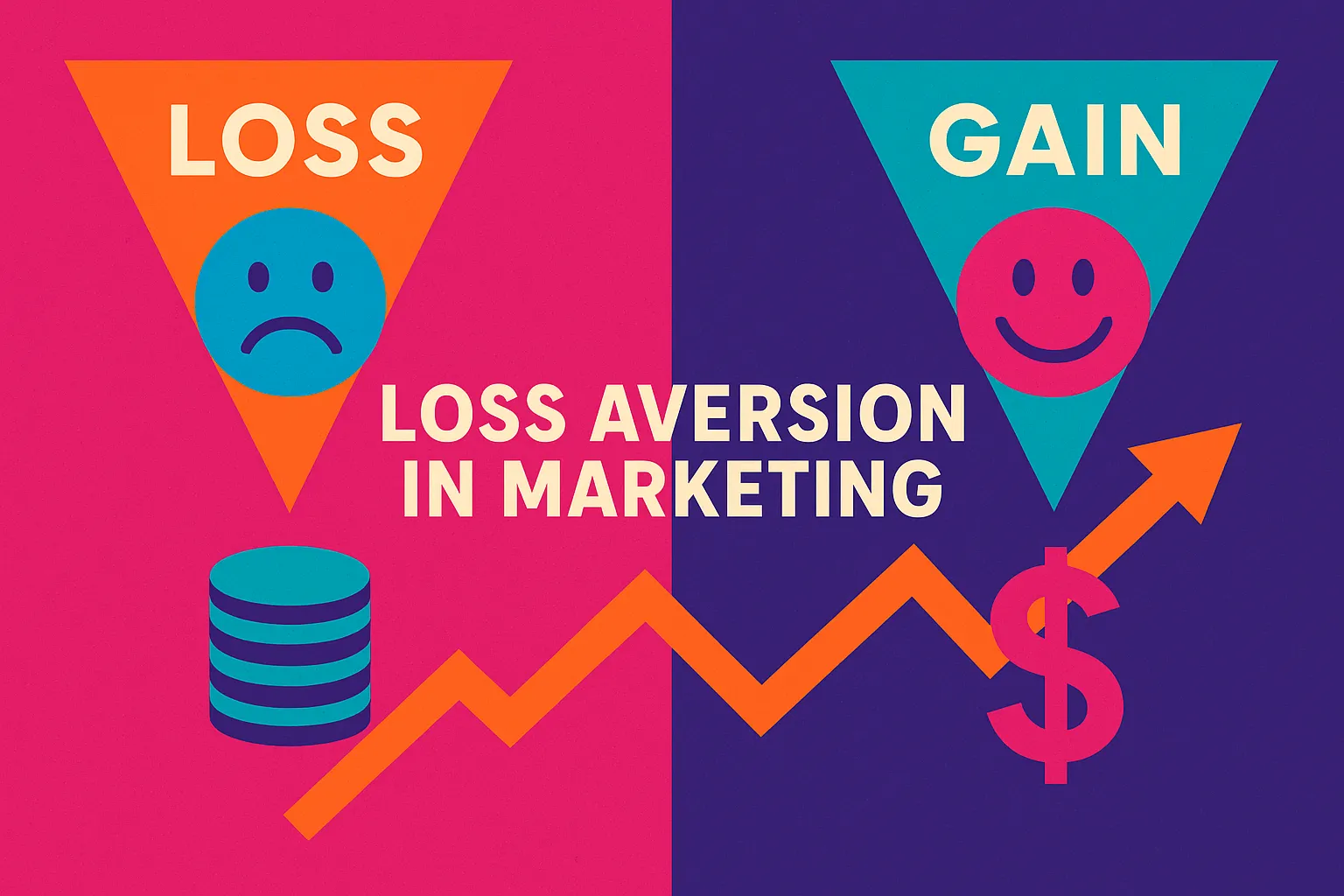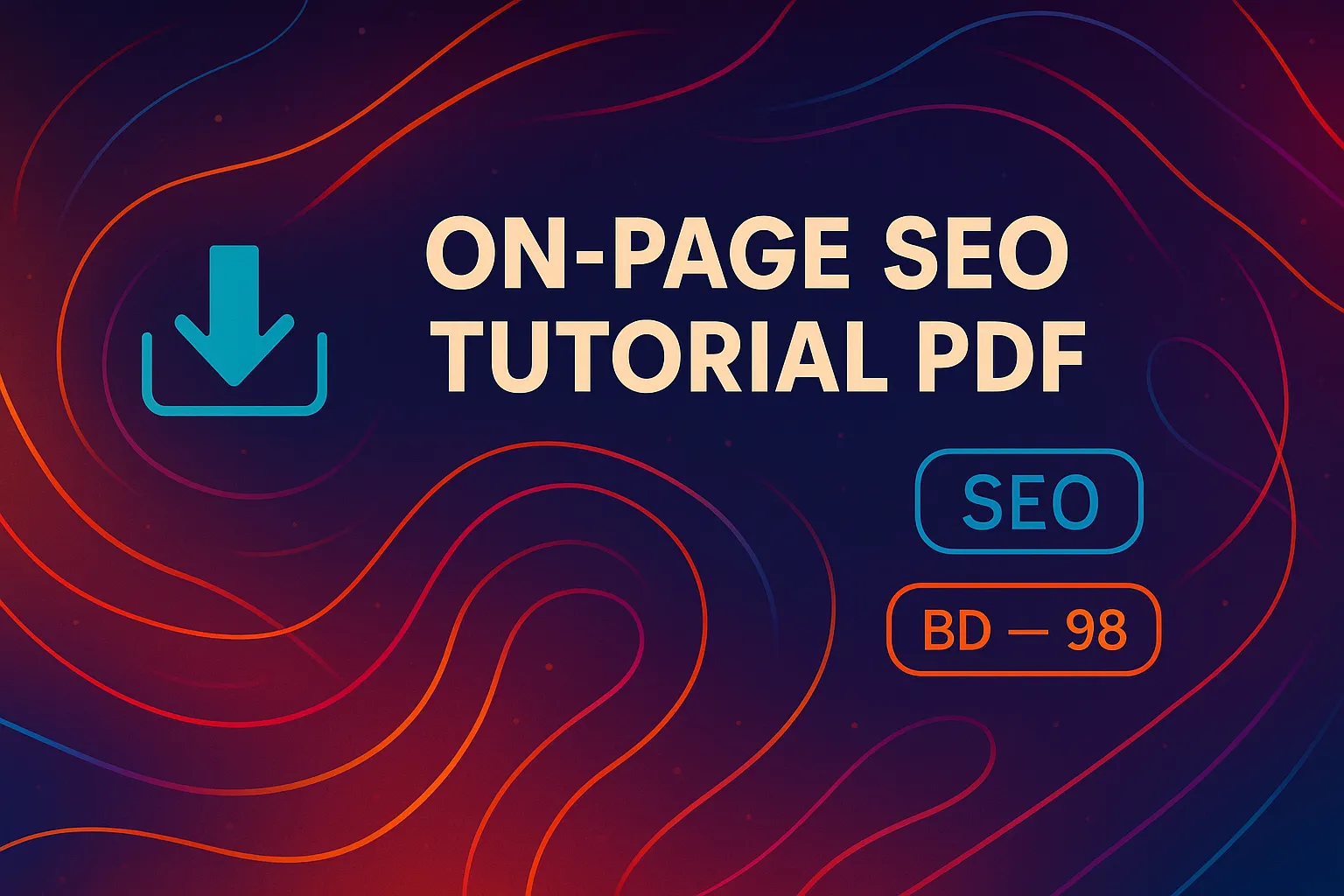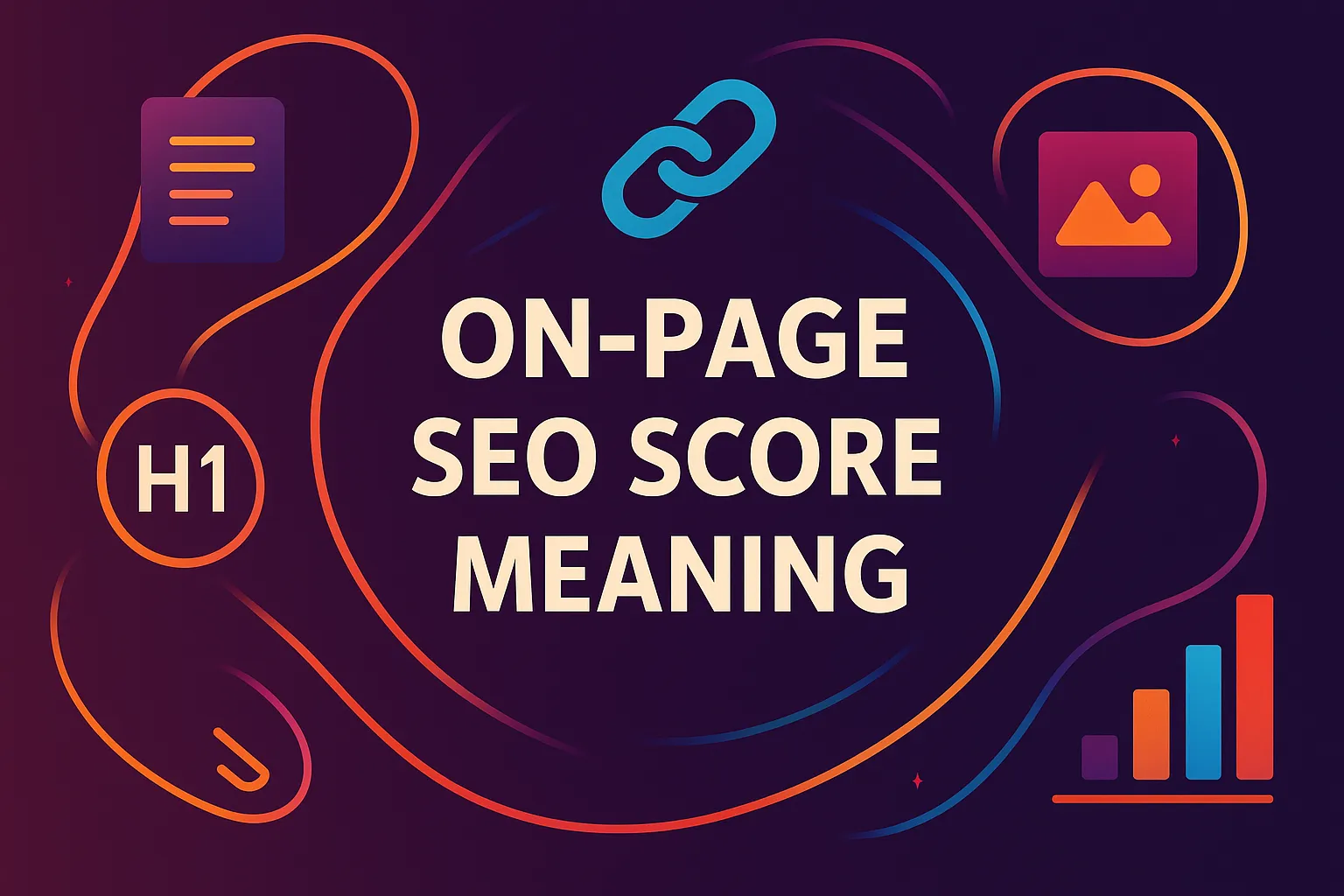What is an “on page SEO video”?
In simple terms, on page SEO video refers to the practice of placing a video directly on a webpage and optimizing it so search engines can understand, index, and rank it. That means doing more than just embedding a YouTube clip.
It involves the way your video is titled, where it appears on your page, how fast it loads, what metadata surrounds it, and whether Google can crawl and process it properly. If that sounds like a lot, don’t worry—we’re going to break it all down for you.
TL;DR Summary
- Learn what “on page SEO video” means and why it impacts Google rankings
- Understand when to embed vs. host your own videos for SEO
- Discover how to optimize video metadata, thumbnails, and structured data
- Get expert insights from 10+ years of real digital marketing experience
- Learn how to measure the success of your on page SEO video strategy
Hosting vs. Embedding: Which Is Better for SEO?
Let’s start with something I see clients struggle with often: whether to host or embed their videos. This decision alone can change how fast your page loads and how much control you have over your SEO setup.
Hosting the video yourself gives you more power over thumbnails, schema markup, and structured data. But hosting can also make your page heavier, potentially slowing it down if you’re not using tools like WebM compression.
Embedding, on the other hand, is super simple—especially when using YouTube or Vimeo—and helps your page load faster. We’ve had success doing both, but it really depends on your content goals.
For brand authority, self-hosting can be worth it. For speed and scalability, embedding is often the better call.
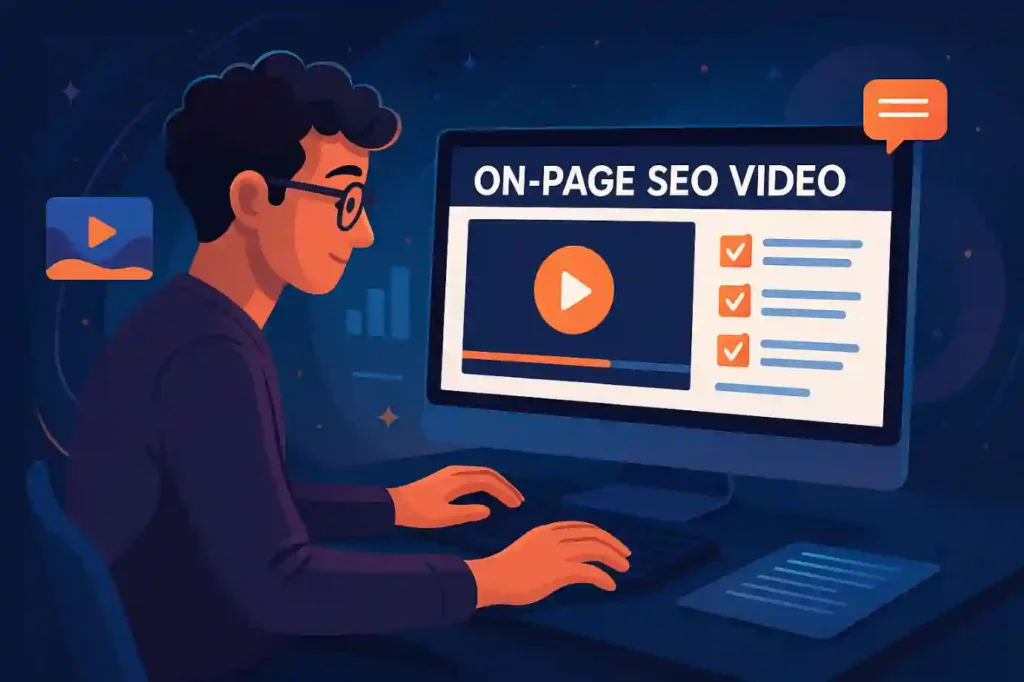
How to Optimize Video for SEO on the Page
One of the biggest wins we’ve seen for clients comes from optimizing the way videos are presented on the page. For starters, always put your main video above the fold.
In fact, we’ve tested this repeatedly, and the data shows that videos placed within the first visible portion of a page are 60% more likely to be indexed by Google. Don’t bury your content—make it visible.
We also recommend using large video players, preferably 640×360 pixels or more. A small, tucked-away video won’t signal importance to search engines.
Beyond placement, the next piece of the puzzle is how you structure your content around the video. Think of it like setting a scene.
You want your video to feel like the main event, so give it a compelling title, a clear and descriptive paragraph above or below it, and maybe even some call-to-action buttons. One trick we use is including a short transcript of the video.
This not only helps with accessibility, but it also provides keyword-rich content that reinforces the video’s topic. In many cases, this leads to ranking not just for the video, but for the entire page.
Using Structured Data for Better Visibility
Where a lot of people fall short is not using structured data. I get it—it sounds technical. But schema markup is how you speak Google’s language.
Using VideoObject schema helps search engines understand key details like video duration, title, upload date, and thumbnail. We use JSON-LD format most of the time because it’s flexible and easy to maintain.
If you’re not comfortable adding this manually, tools like the Yoast Video SEO plugin can help automate it. But no matter how you do it, this step is essential for showing up in video carousels and rich snippets.
Create Custom Thumbnails That Pop
Thumbnails deserve special mention because they are your first impression in search results. Don’t let the platform auto-generate them—design your own!
We like to use branded overlays with bold titles, contrasting colors, and imagery that speaks directly to the content. According to a study from Wistia, custom thumbnails can improve play rate by 30%.
On top of that, we ensure the thumbnail meets Google’s requirements—at least 60×30 pixels, in a supported format like JPG or PNG, and accessible to Googlebot.

Tapping into Featured Snippets and Rich Results
We’ve also experimented with using videos to win featured snippets. It’s not guaranteed, but there’s a better chance if your video is clearly answering a question, especially with timestamps or “key moments.”
Google will often pull in these segments if they’re clearly labeled either in your structured data or the video description. For YouTube videos, you can simply add timestamps in the description—Google loves that.
Support Your Video with Quality Content
Another crucial part of on page SEO video is the supporting content. Don’t isolate your video in a sea of whitespace.
Add context. Write a paragraph or two that reinforces what the video covers. Use H2s and bullet points to break things up.
We even recommend embedding videos alongside product pages, testimonials, or how-to guides. When the video is relevant to the surrounding content, you create a richer, more useful experience.
Google takes note of that.
Measure Video SEO Performance Effectively
We also track how these videos perform using a few key tools. Google Search Console is a must—it has a section specifically for video pages and will tell you whether your videos are being indexed properly.
We also look at metrics like click-through rate (CTR), bounce rate, and time on page. Videos tend to increase dwell time dramatically.
On one client site, after embedding optimized video content, the average session duration jumped from 1:47 to 3:02. That’s a signal to Google that users are engaged.
Performance Comparison Table:
Optimization Technique | Impact on SEO | Our Experience (Before vs. After) |
Above-the-fold video | Higher indexing rate | +60% video indexing within 30 days |
Custom thumbnail | Better CTR in search results | +25% increase in video clicks |
Structured data | Eligibility for rich results | Videos appeared in carousel for 3 queries |
Transcript inclusion | Improved keyword density | Page ranked for 2 additional long-tails |
Fast-loading video | Reduced bounce rate | Bounce rate dropped from 48% to 32% |

Choosing the Right Videos for SEO
When it comes to picking the right type of video, we always tell clients to start with their most valuable knowledge. Product demos, how-to guides, and customer success stories tend to perform best.
These are videos that offer real value—not just flashy visuals. We’ve seen service-based businesses double their organic leads by embedding a 90-second explainer at the top of their homepage.
Designing Layout That Highlights Your Video
The last thing I want to stress is the layout of your page. Make sure your video stands out.
We often design pages where the video takes full-width space or is framed with a contrasting background. Visually, this draws the eye and tells both users and search engines: this is important.
Even small things like adding a headline above the video or a CTA button below can make a huge difference.
Tracking, Testing, and Improving Over Time
Once you’ve built the page and added your video, the work doesn’t stop there. Now it’s time to evaluate how effective your on page SEO video strategy really is.
At Vibe Branding, we believe in using real data to back up our design and content decisions. So we recommend setting up tracking through tools like Google Analytics, Search Console, and even heatmapping software like Hotjar.
This lets us see where people click, how long they watch, and whether they take the next step. Search Console, in particular, has a section dedicated to video performance.
Here, you can see how many of your videos are being indexed, whether they’re showing in rich results, and if any errors are present. One of our clients had a video carousel opportunity for their product pages, but they weren’t using the right schema.
After we fixed that, they began appearing in the Video tab within two weeks. Just that change increased organic impressions by 18%. Equally important is looking at dwell time and bounce rate.
These two metrics are silent indicators to Google about how satisfying your content is. A page with a relevant video typically sees users sticking around longer, and they’re less likely to hit the back button.
That’s why we always recommend testing with A/B experiments—one version of a landing page with a video, one without. Almost every time, the version with the on page SEO video performs better.
Final Thoughts
If you’ve made it this far, you’re clearly committed to getting video SEO right. And that’s the first step.
But to really master it, you need to treat video like any other core content type: plan it, optimize it, test it, and improve it over time. That’s what we’ve done for clients across industries—from ecommerce to SaaS to education—and it’s what has kept us trusted partners in this space for over 10 years.
Adding videos to your site isn’t just about catching attention anymore. It’s about building relevance, delivering value, and speaking to both human users and the algorithms that guide them.
A properly optimized on page SEO video becomes an asset—one that earns visibility, clicks, and ultimately conversions. There’s a reason Google is showing more videos in search than ever before.
Users want answers fast, and video often delivers in a way text can’t. So if you’re not using this to your advantage, now’s the time to start.

